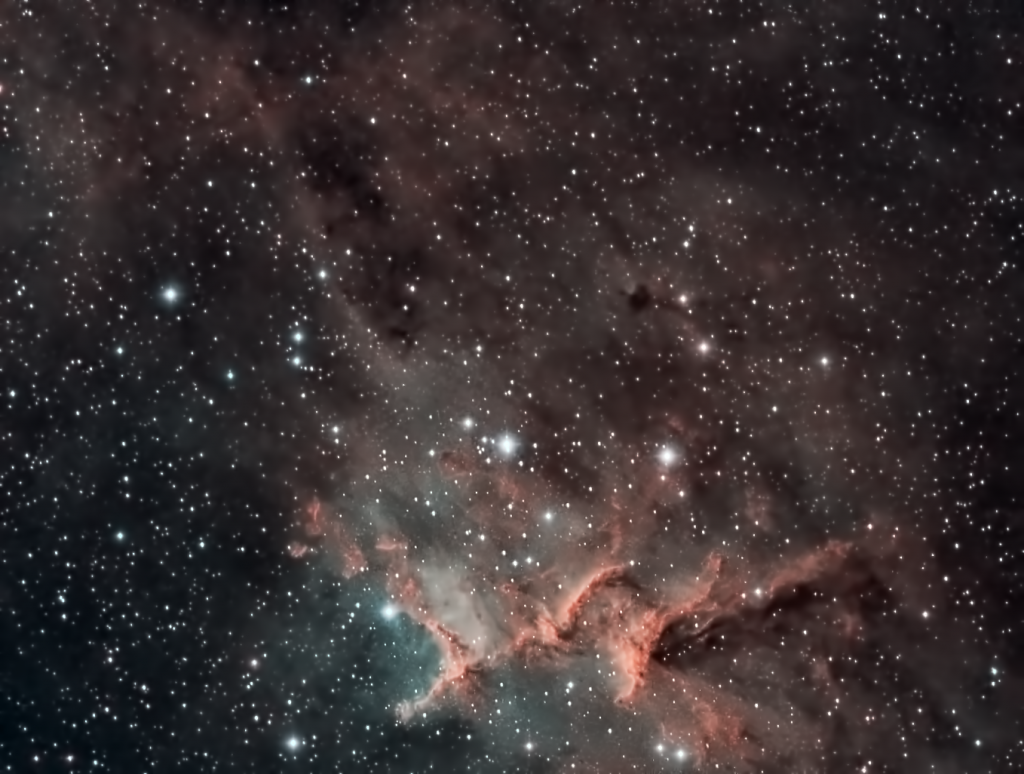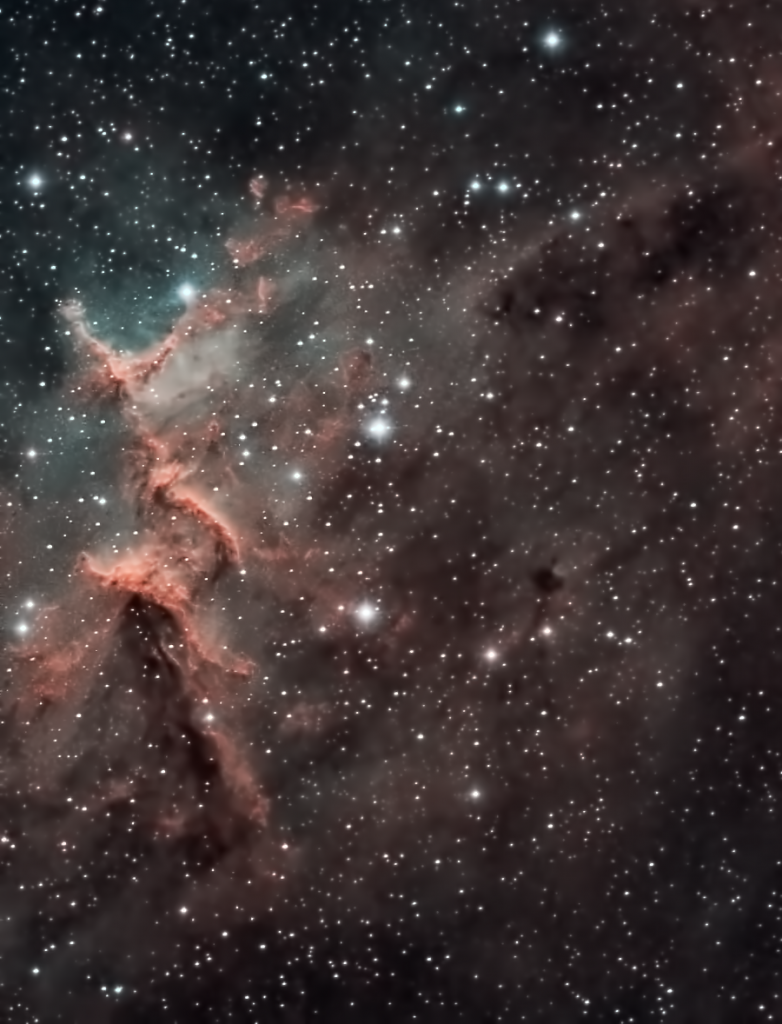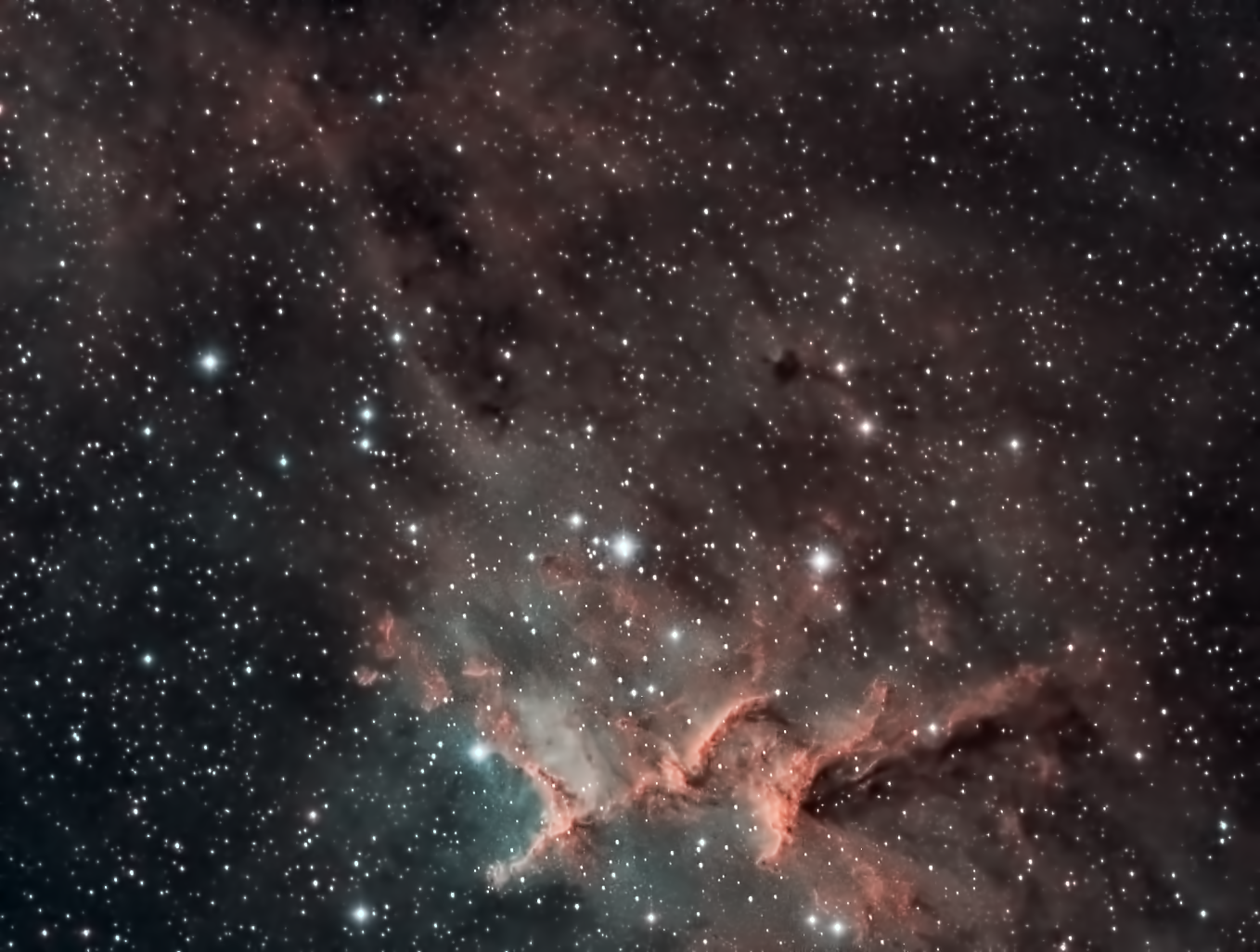
Similar Posts
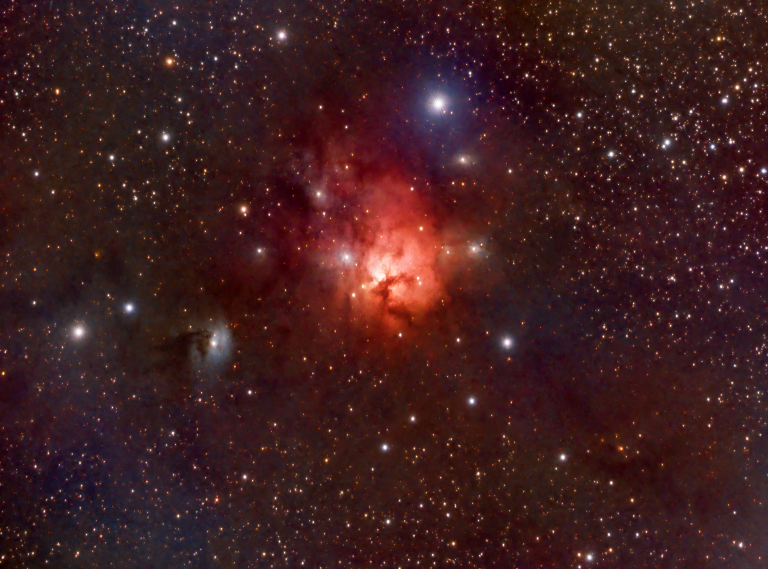
The Northern Trifid Nebula
Formally NGC1570, the “Northern Trifid” is a combination of an emission nebula (the red parts, which is ionized Hydrogen emitting its own light) and a reflection nebula (the blue parts, which is starlight reflecting off dust.) You can also see hints of the dust surrounding this area, which is difficult to capture under the light-polluted…
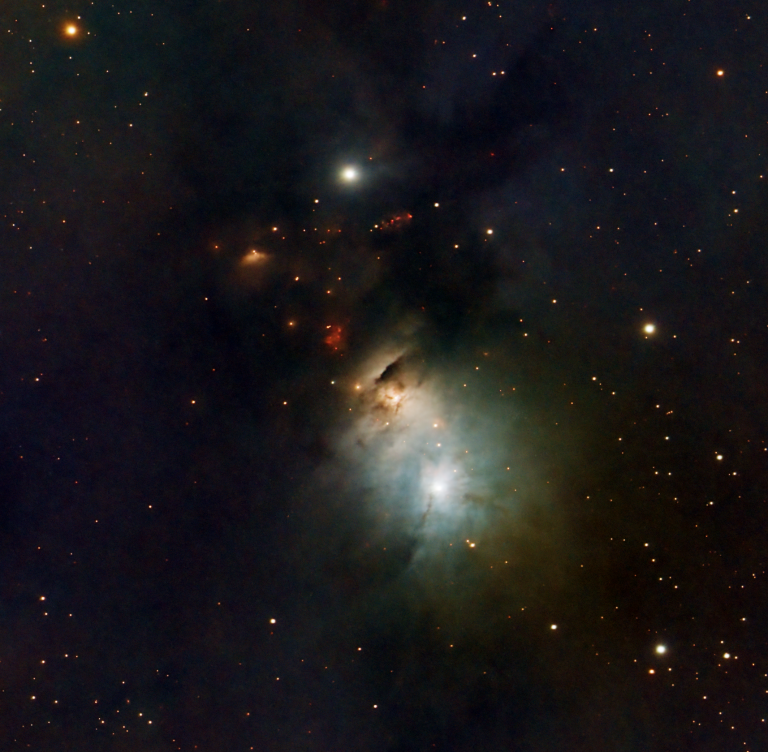
Brand-new stars in NGC1333
This image really blows my mind – this is the reflection nebula NGC1333 in Perseus. The blue part is reflected gas and dust from the star that’s lighting up – that’s nothing too unusual. But check out the little red blobs above it. Many of those are “Herbig-Haro” objects, formed by jets spewing out from…
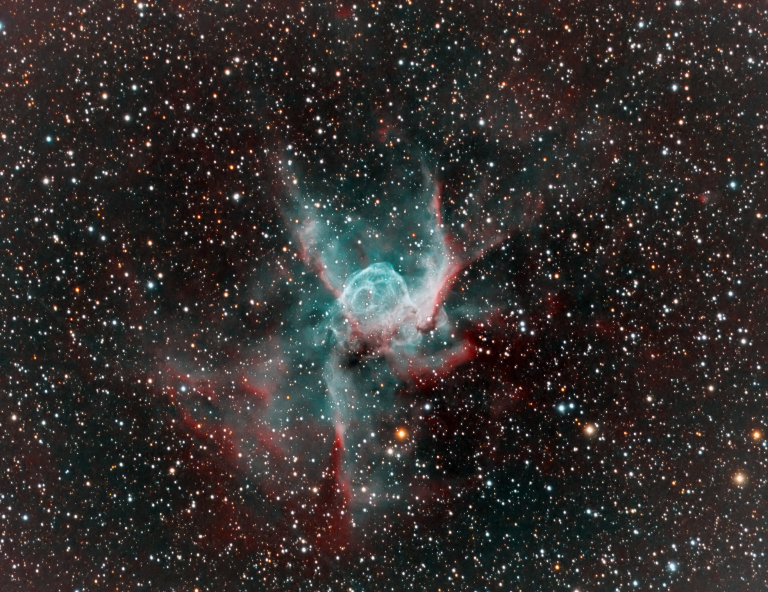
Thor’s Helmet
This week’s target was Thor’s Helmet (NGC 2359), an emission nebula in Canis Major a rather distant 12,000 light-years away. It’s formed by a Wolf-Rayet star in its center, which is a crazy-hot star whose immense stellar wind is bunching up and ionizing the gases around it in these complex patterns. It’ll probably go supernova…
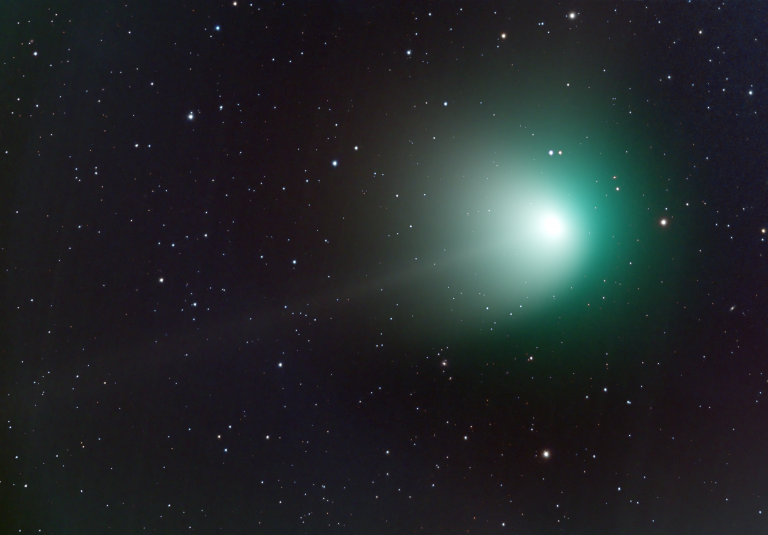
Another look at the “green comet”
I don’t know why the press has latched onto the name “the green comet” for C/2022 E3 (ZTF) – most comets are green, and it’s too dim to see any color at all if you’re viewing it through binoculars or a telescope. But through 2 hours of total exposure time, the colors do emerge, and…
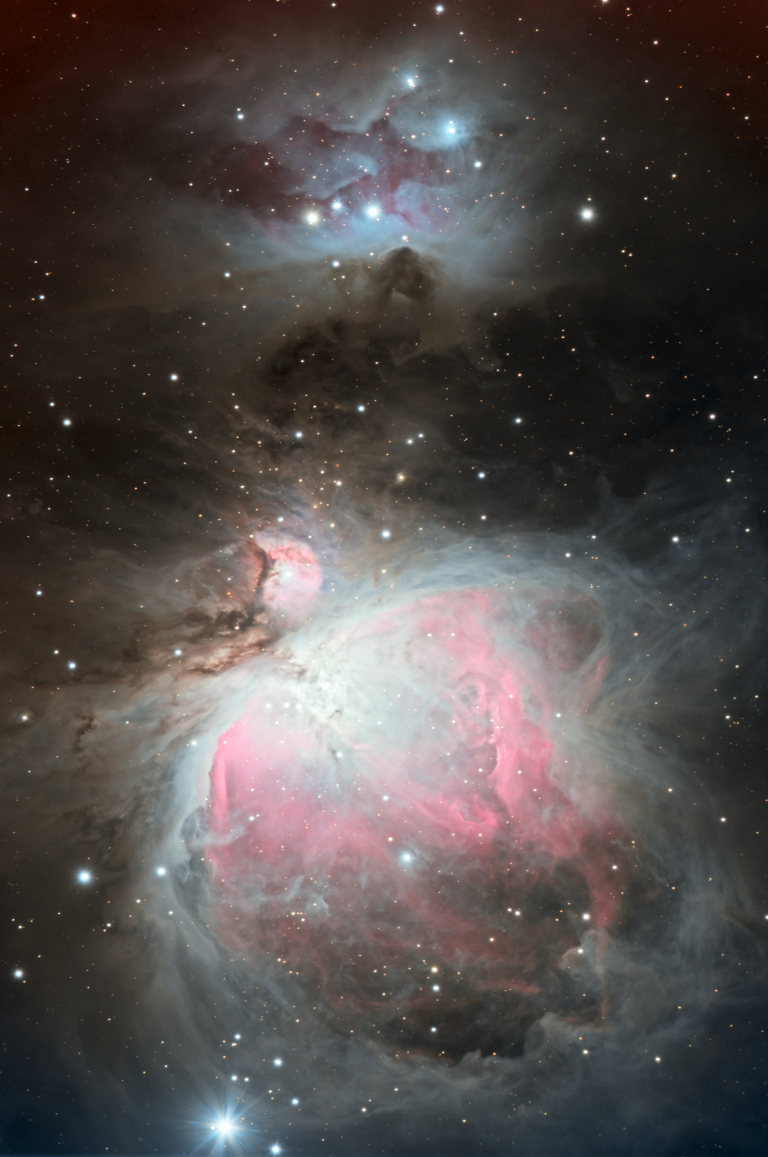
Orion’s Sword
If you look at the constellation Orion in the winter night’s sky, the center of Orion’s “sword” is not a star at all – it is the brightest nebula in our sky, M42 or the Great Nebula of Orion. Sitting right on top of it is technically another nebula designated M43, and above that is…
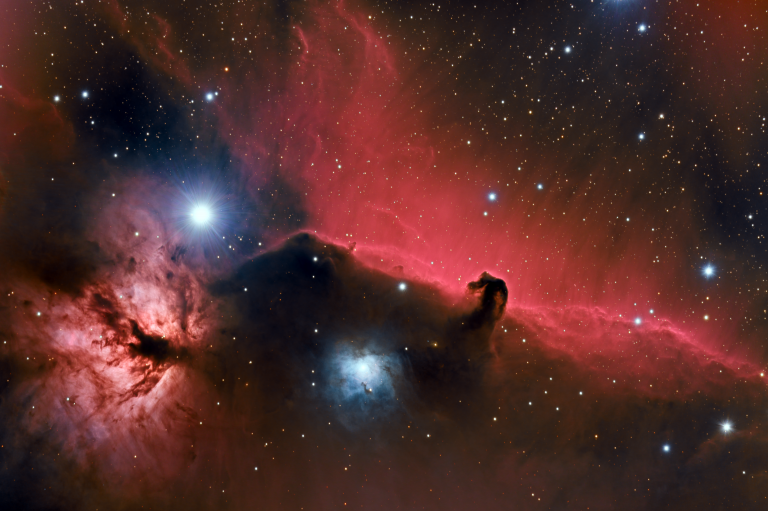
Going Deep with the Horsehead and Flame
The Horsehead and Flame nebulas, although popular, are really difficult to image together. The clouds of Hydrogen look best using narrowband filters, but the blue reflection nebula below the Horsehead only appears in wideband, color filters. Further complicating matters is the bright star Alnitak, one of the stars that makes up Orion’s belt. In narrowband,…

